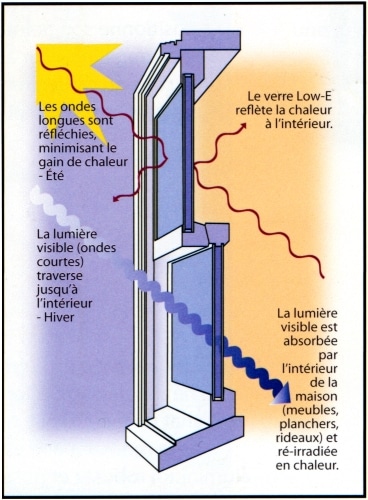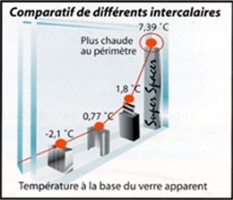FAQ
As explained by Bruno Nantel, technical editor at the APCHQ’s Technical Service and Site Inspection Service, during very cold spells, the relative humidity in your house does not follow the same curve as the falling outdoor temperature.
Ventilation systems help adjust the indoor air’s relative humidity to follow outdoor temperature drops. However, their effectiveness varies, so some may not reduce the humidity quickly enough.
Thus, when there’s a sudden drop in temperature in humid air, even high-quality glass cannot fully compensate for the temperature variations, and condensation occurs, revealing excess water vapor that the air can no longer hold.
Here are some tips suggested by APCHQ to help prevent condensation:
- limit the number of houseplants inside;
- check that your dryer is properly vented;
- avoid lowering the indoor temperature;
- do not store firewood in the basement;
- use kitchen and bathroom fans during and after use;
- avoid taking unnecessarily long showers;
- make sure ventilation registers are properly located and unobstructed;>
- emove screens from your windows;
- do not close curtains or blinds in the evening; allow heat from the heating system to keep the glass warm.

Here is all the information regarding the Fenplast product warranty.
The addition of a transparent metallic coating.
 Glass with a metallic oxide layer applied is called low emissivity glazing (also known as Low-E). With this, you benefit from varied protection against UV rays that can damage carpets and fabrics.
Glass with a metallic oxide layer applied is called low emissivity glazing (also known as Low-E). With this, you benefit from varied protection against UV rays that can damage carpets and fabrics.
Fenplast offers you two types of energy-efficient glass. The first, standard, is Low-E ES© glass, designed to maximize the energy performance of the window, giving you an exceptional ER (Energy Rating) value. This type appears in the “Performance” tables for each product.
Optionally, you can choose Super HP© glass, expressly designed to block heat gain from sunlight, while preserving your interior’s warmth with a high R-value. This glass is best for rooms like solariums or those with heavy south/southwest exposure that causes excessive overheating.
A non-conductive spacer (the part that separates the two pieces of glass in the sealed unit).
 The edge of a sealed unit is a key condensation factor in all residential windows. It’s essential to pair high-performance windows with the proper spacer. There are several types, with varying effectiveness.
The edge of a sealed unit is a key condensation factor in all residential windows. It’s essential to pair high-performance windows with the proper spacer. There are several types, with varying effectiveness.
Fenplast uses a NASA-approved structural foam, dual-seal Super Spacer™, combining all the advantages of a non-metallic spacer with top durability and gas retention in line with the world’s highest standards.

